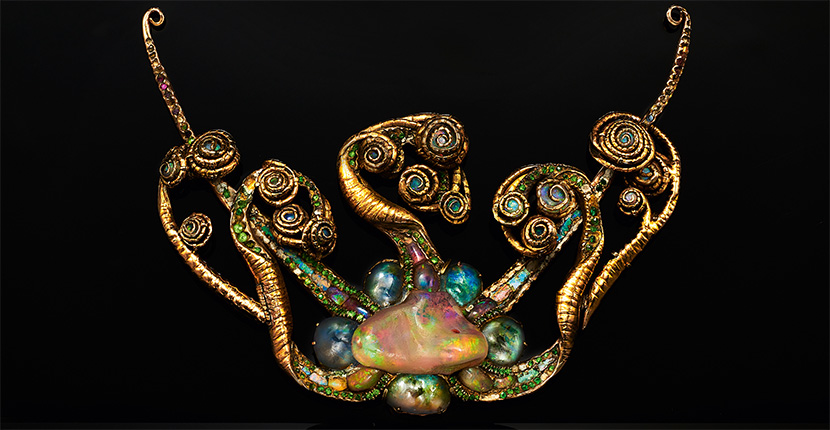In the heart of the Tiffany Landmark in New York City, two display cases attract attention—the first showcasing the renowned Tiffany Diamond, and the second housing the exquisite Medusa pendant designed by Louis Comfort Tiffany in the early 1900s. These treasures embody the legacy of Tiffany & Co., representing the brand’s excellence in gemology and groundbreaking creativity since its establishment in 1837.
While the story of the Tiffany Diamond is widely known, the historical journey of Louis Comfort Tiffany’s Medusa pendant remains less familiar. There is good reason for this, as the whereabouts of this jewel were shrouded in mystery after its sale in 1943 by the family of its original owner, art collector Henry Walters.
The Medusa pendant, inspired by the Medusa jellyfish in its life cycle, gained legendary status through a colorized photo published in the 1914 book The Art Work of Louis Comfort Tiffany. This publication showcased highlights of Tiffany’s career, and the Medusa’s lyrical Art Nouveau design and dreamlike colors captivated generations.
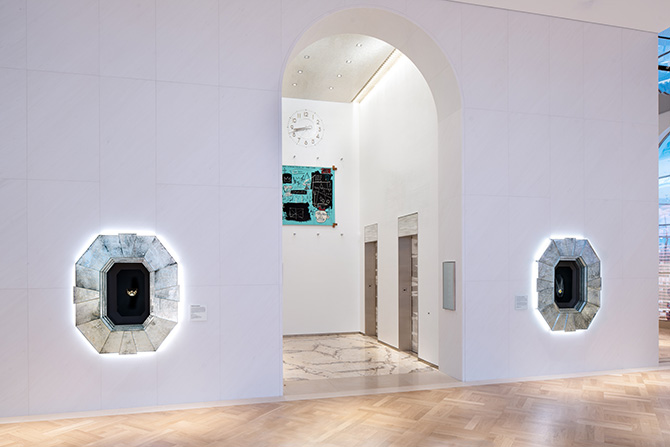
Arlie Sulka, the current owner of Lillian Nassau, a gallery specializing in Louis Comfort Tiffany’s works, recalls seeing the Medusa pendant in the 1914 Tiffany book when she joined the gallery in the 1980s. She describes it as a masterpiece and one of Tiffany’s top creations. Over the years, there was much speculation and discussion about the pendant’s whereabouts and condition.
Neil Lane, a vintage jewelry dealer and expert with an extensive collection of Tiffany pieces, echoed Sulka’s sentiments, affirming that many enthusiasts were on the hunt for the Medusa pendant until it appeared at Sotheby’s auction.
In December 2021, the Medusa pendant exceeded its pre-sale estimate of $100,000 – $200,000, setting a world record price for any Louis Comfort Tiffany creation. After a fierce bidding war lasting about 10 minutes, the hammer finally came down at an astounding $3,650,000. The Tiffany Archives seized the opportunity to acquire this valuable piece, recognizing its significance.
There are several reasons why the Medusa pendant has garnered such excitement. First and foremost, it was part of Louis Comfort Tiffany’s inaugural collection of jewelry for Tiffany & Co. This collection, consisting of around 27 pieces, showcased Tiffany’s transition into jewelry design after establishing himself as a celebrated artist in America.

Louis Comfort Tiffany, the son of Tiffany & Co. founder Charles Lewis Tiffany, was born in New York City in 1848. His early teenage years were spent studying painting under renowned American artist George Inness, fueling his aspirations to become a fine artist. As a young man, he traveled extensively, immersing himself in different cultures and artistic influences around the world.
These travels played a significant role in shaping Tiffany’s artistic vision. He once remarked, “When I first had the chance to travel in the East and to paint where the people and the buildings are clad in beautiful hues, the pre-eminence of color in the world was brought forcibly to my attention.” This exposure broadened his artistic horizons, leading him to explore various art forms such as furniture design and photography.
In the 1870s, Louis Comfort Tiffany began experimenting with glass, eventually revolutionizing the medium. He established his own production studios, assembling teams of skilled artists and experts who crafted everything from his patented Favrile glass vases to intricate stained-glass windows and lamps.
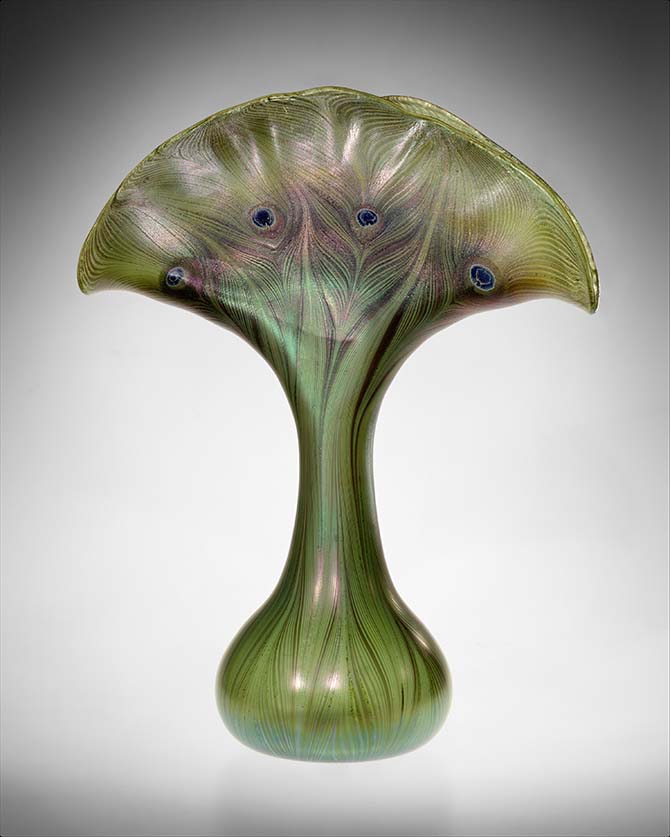
In addition to his expertise in glasswork, Louis Comfort Tiffany became a prominent figure in interior design. His notable commissions included renovating Mark Twain’s home in Hartford, Connecticut, and redesigning several rooms in the White House during President Chester Arthur’s tenure. Tiffany’s most celebrated interior design project was the Manhattan residence of Louisine and Henry Osborne Havemeyer, avid art collectors and connoisseurs of Impressionist art.
With his Grand Prize win at the 1900 Paris Exposition Universelle, Louis Comfort Tiffany solidified his position as one of the greatest creative minds of the era. This achievement was particularly noteworthy as an American artist triumphing over formidable French talent, catalyzing the Art Nouveau movement.
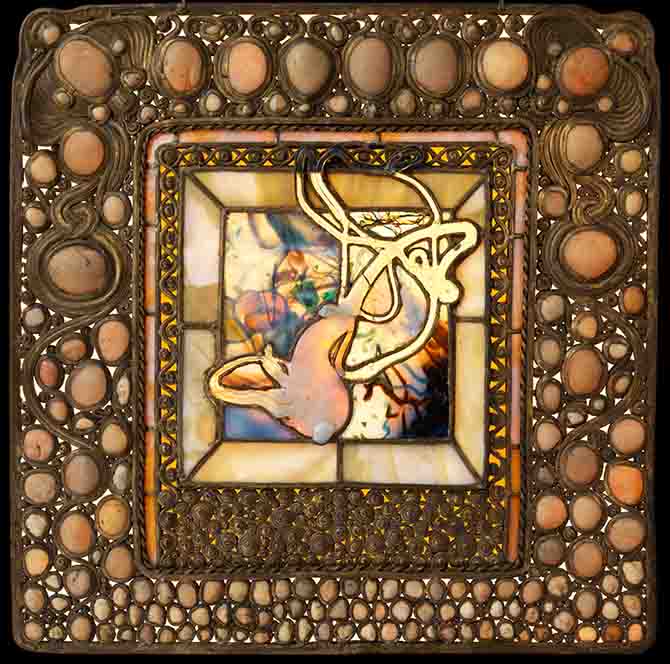
Despite achieving recognition in the decorative and fine arts domain outside of Tiffany & Co., Louis Comfort Tiffany’s career trajectory changed when he assumed control of the company following his father’s death in 1902. Inheriting a substantial fortune and a controlling interest, he became Tiffany & Co.’s Art Director and delved into jewelry design at the age of 54.
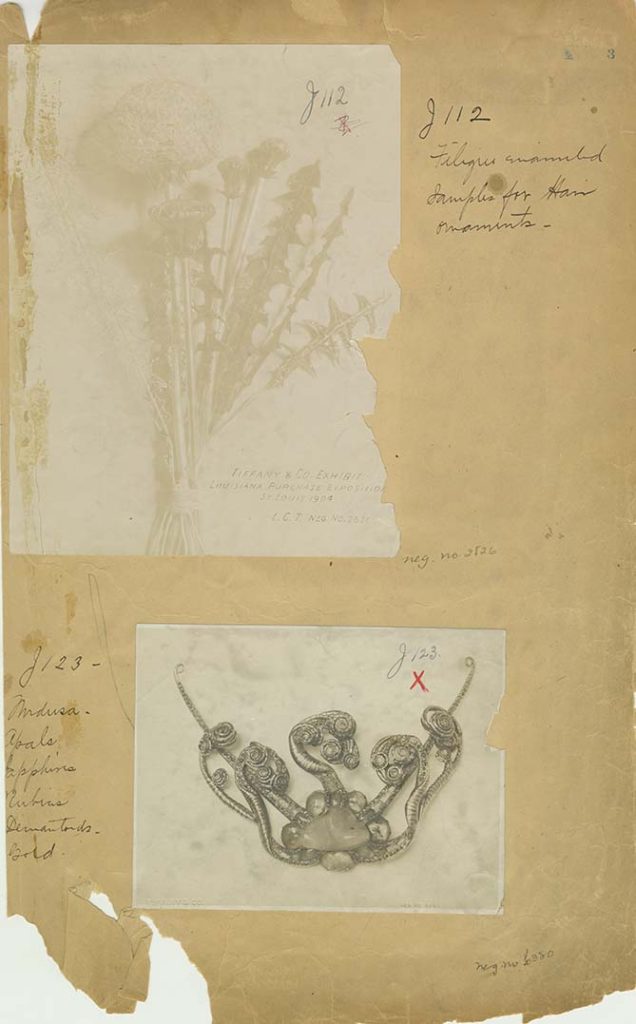
The Medusa pendant was a part of Tiffany’s first jewelry collection, which he collaborated on with Julia Munson over two years. Julia, one of the few talented women in Tiffany Studios, acted as a collaborator, providing valuable input and overseeing manufacturing processes for the jewelry pieces.
Elements of Louis Comfort Tiffany’s glasswork can be observed in the design of the Medusa pendant. Arlie Sulka points out its resemblance to his early stained-glass windows from the 1880s, such as the jellyfish design at the Metropolitan Museum of Art. The demantoid garnets in the pendant resemble the jewels found in stained glass, while other gems evoke the iridescence of his opalescent glass.
The uniquely shaped opals forming the jellyfish’s bell were likely sourced by George Frederick Kunz, Tiffany’s head gemologist known as the father of American gemology. Kunz oversaw the cutting of the famous 128-carat Tiffany Diamond in Paris.
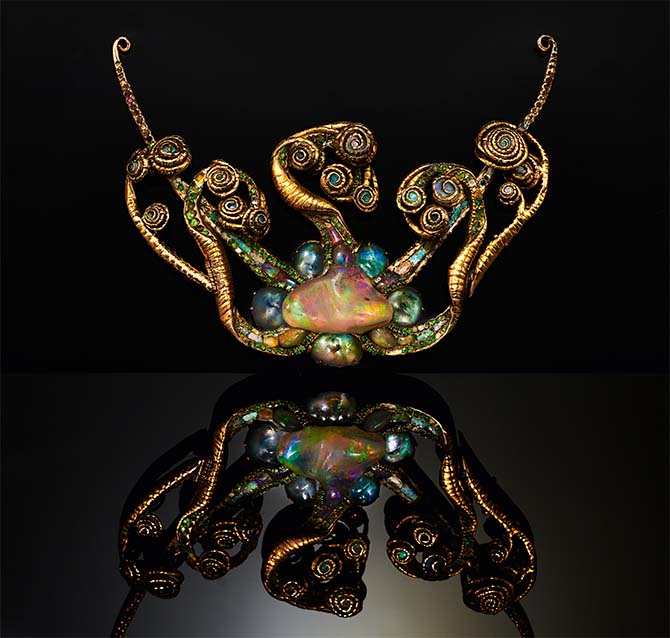
The Medusa pendant exhibits a sculptural quality in its gemstones and goldwork, creating a three-dimensional effect unlike the prevailing diamond and platinum Garland Style jewelry of the time. Hidden joints provide the pendant with articulation and gentle flexibility where the bell meets the tentacles.
The arms on either side of the pendant curl around and hold a choker-length chain necklace, even though Louis Comfort Tiffany never displayed it with a necklace. Instead, he considered it an art object, exemplifying his view on jewelry as a form of artistic expression.
Uniquely, the pendant bears Louis Comfort Tiffany’s signature on the reverse side, marked with the word “artist.” This inscription makes it the only known Tiffany jewel signed as such. It reads, “Louis C. Tiffany artist,” further emphasizing his belief that jewelry should be regarded as artwork.
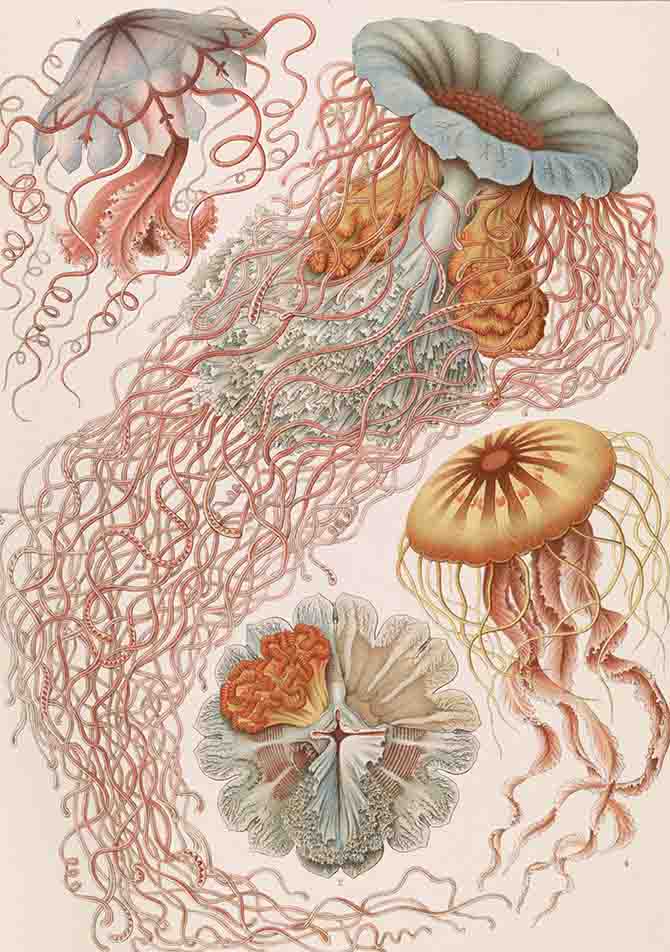
While many of Louis Comfort Tiffany’s jewelry designs were faithful representations of flora and fauna found in nature, the Medusa pendant offered a stylized interpretation of a jellyfish. Its Art Nouveau aesthetic is accentuated by the flowing lines and forms reminiscent of jellyfish tentacles, a motif explored by several Art Nouveau designers.
Renowned French Art Nouveau artists, including Émile Gallé and René Lalique, drew inspiration from illustrations by biologist Ernst Haeckel, who extensively studied jellyfish. It is highly likely that Louis Comfort Tiffany, like his contemporaries, was aware of Haeckel’s work, possibly owning a copy of his book Art Forms in Nature (initially published in 1899).
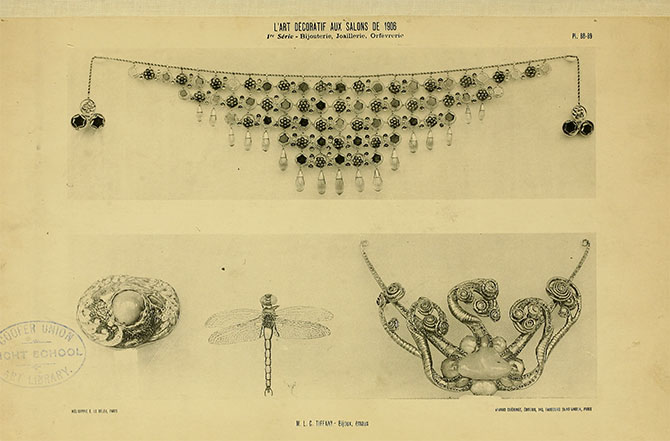
The launch of Louis Comfort Tiffany’s first jewelry collection, including the Medusa pendant, occurred at the 1904 Louisiana Purchase Exposition, also known as the St. Louis World’s Fair. These international exhibitions attracted millions of visitors and provided a platform for showcasing the finest creations. LCT’s jewelry collection was displayed in the Palace of Arts, alongside paintings and sculptures, breaking new ground by featuring applied arts in this setting.
The press coverage of the collection’s unveiling was overwhelmingly positive, with publications such as Vogue, Town & Country, and The Jeweler’s Circular Weekly praising the exceptional beauty of Tiffany’s pieces. According to a review in The Craftsmen, attempting to describe the collection’s magnificence was impossible.
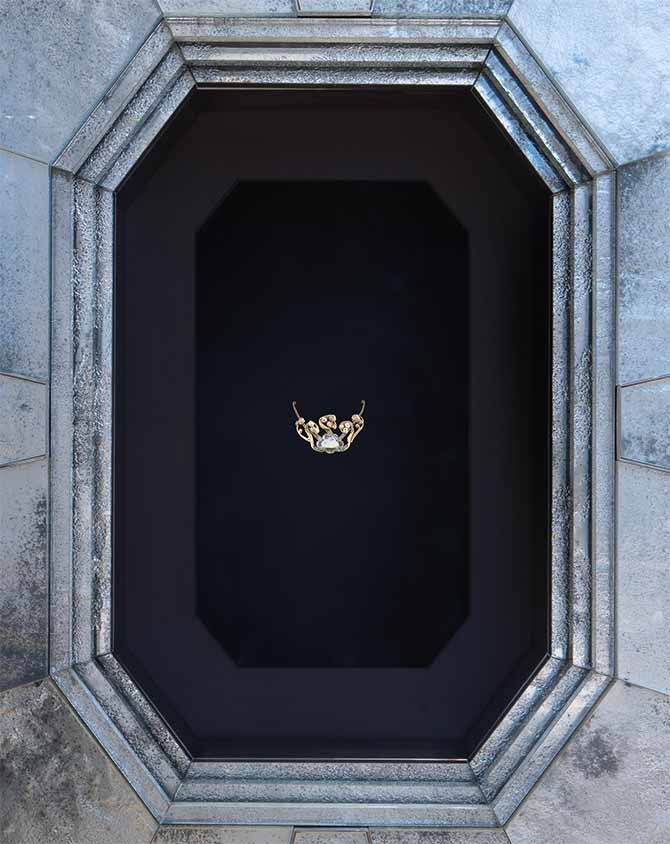
Two years later, the Medusa pendant was exhibited at the L’Art Decoratif Aux Salons de 1906 in Paris. It was then acquired by Henry Walters, an avid art collector, who later gifted it to his wife, Sarah.
After passing through the Walters family, the Medusa pendant ended up in the possession of Salman Schocken until its sale at Sotheby’s in 2021 and its subsequent acquisition by The Tiffany Archives.
Now that the Medusa pendant is on display, its legend is sure to grow, much like the world-renowned 128-carat Tiffany Diamond that accompanies it on the back wall of the Tiffany Landmark.
